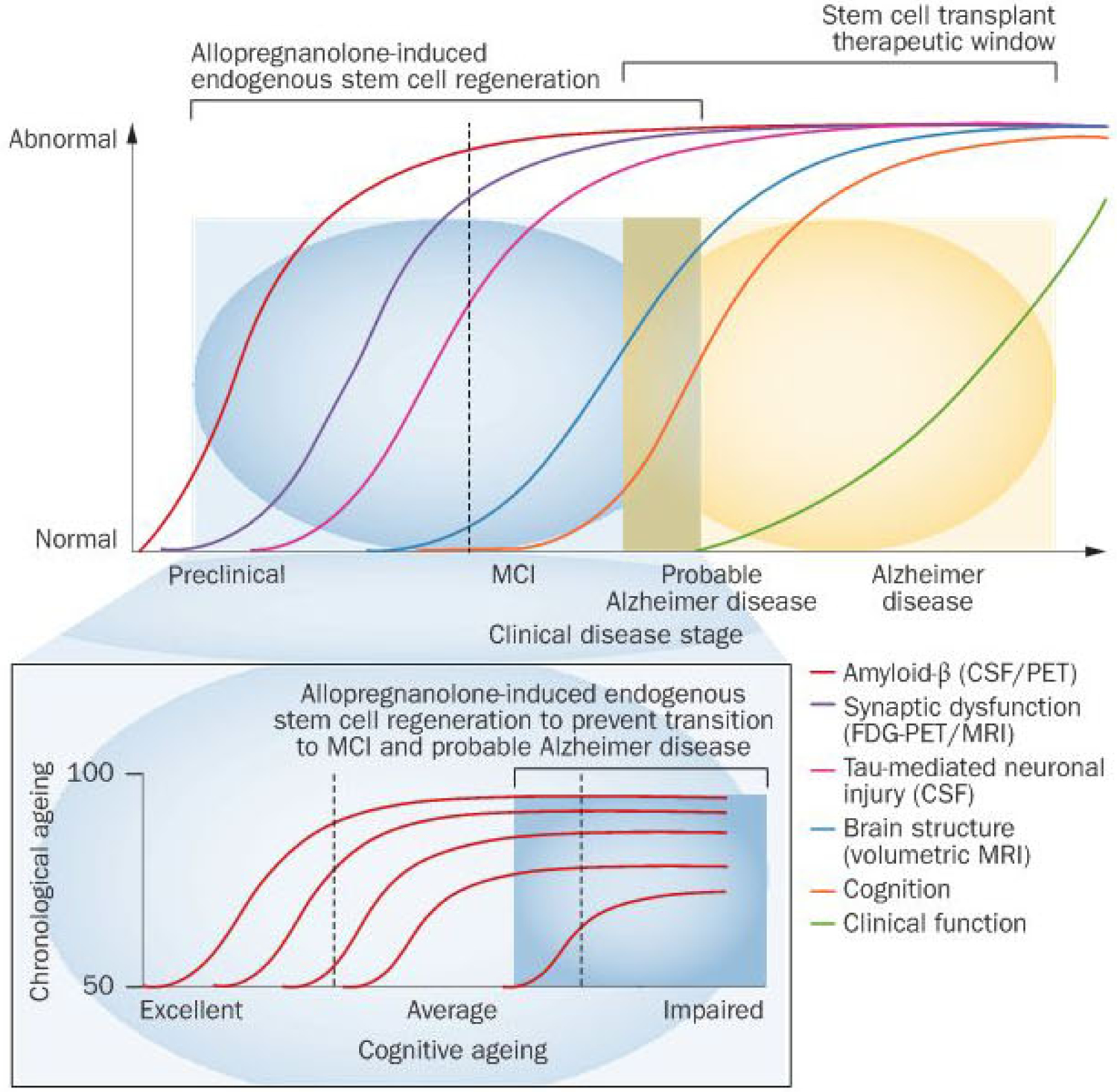Figure 5 |.

Theoretical window of opportunity for therapeutic efficacy to promote endogenous regeneration of neural stem cells versus stem-cell-based therapies. Age-related neurodegenerative progression to subjective memory complaints, to cognitive impairment, to mild cognitive impairment, to probable Alzheimer disease and ultimately to Alzheimer disease is characterized by sequential development of detectable pathology and clinical symptoms.41 The coloured lines indicate clinical analyses performed at each stage of disease progression: CSF and PET analysis for amyloid-β (red line), FDG-PET/MRI for synaptic dysfunction (purple line), CSF analysis for Tau-mediated neuronal injury (pink line), volumetric MRI for brain structure (blue line), cognition (orange line) and clinical function (green line) analyses. The proposed window of opportunity for promoters of endogenous regeneration is based on preclinical data. Extrapolated to ageing human brain, the window of therapeutic opportunity would be bracketed starting from the onset of age-associated neural stem cell quiescence, coinciding with a decline in cognitive function and extending into the mild cognitive impairment range, and closing with the diminished pool of responsive neural stem cells coinciding with probable Alzheimer disease. Whereas regenerative transitions are fairly well defined in the rodent brain, the transition in the human brain and markers of neurogenesis continue to be at the leading edge of clinical neuroscience.73,76,77 Red lines in inset figure indicate projections of cognitive function relative to chronological age. Abbreviations: CSF, cerebrospinal fluid; FDG-PET, 18F-fluoro-2-deoxyglucose PET; MCI, mild cognitive impairment.
